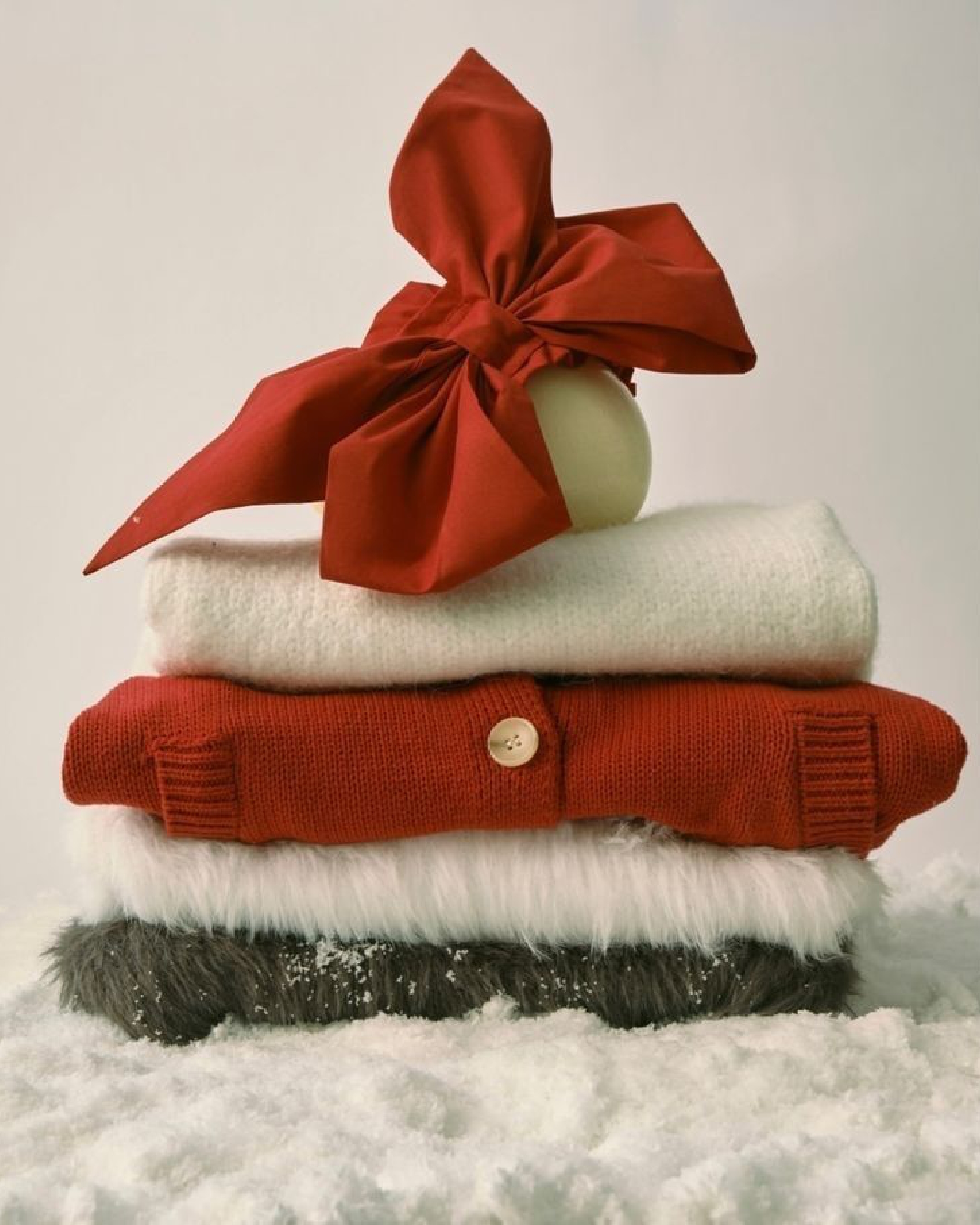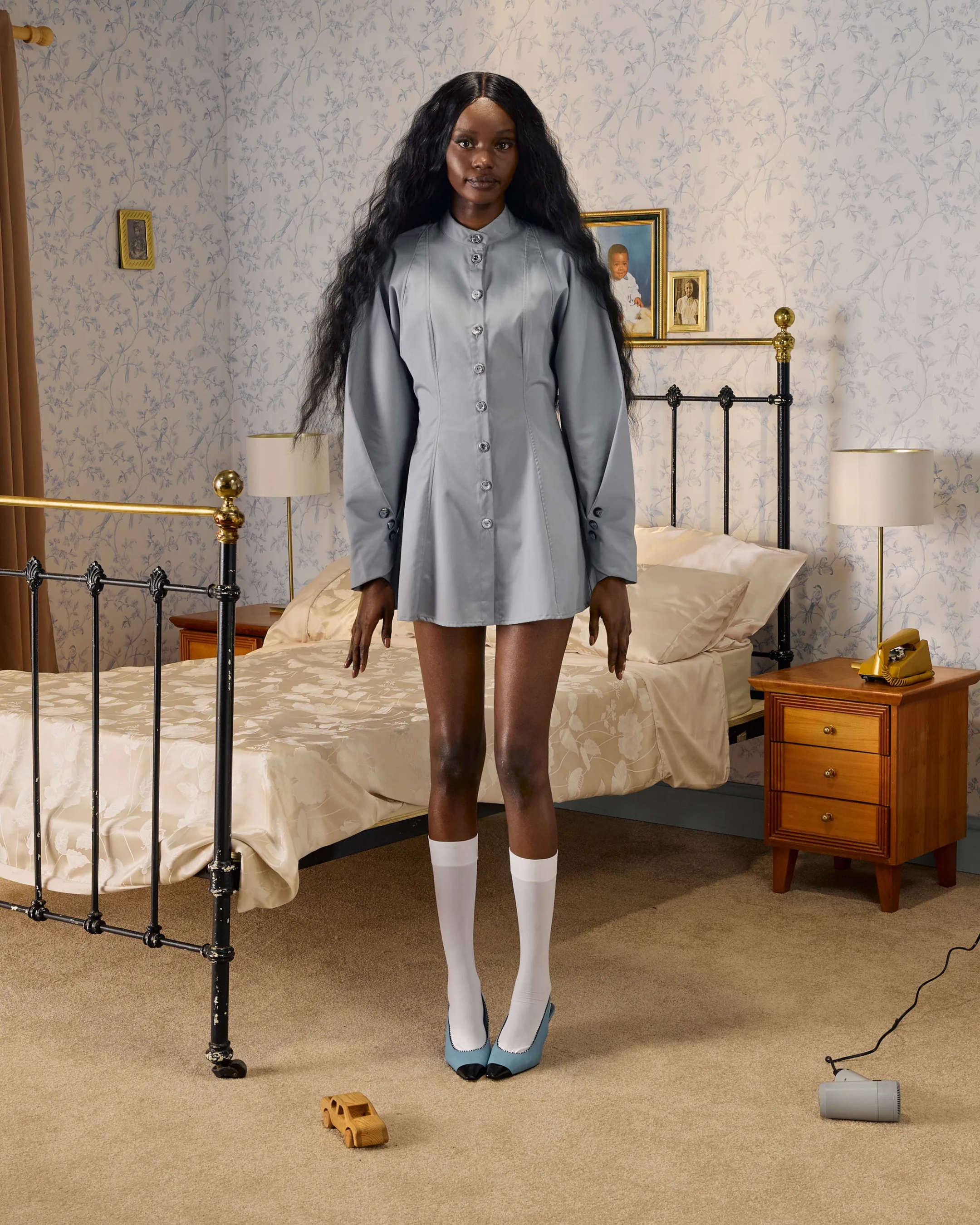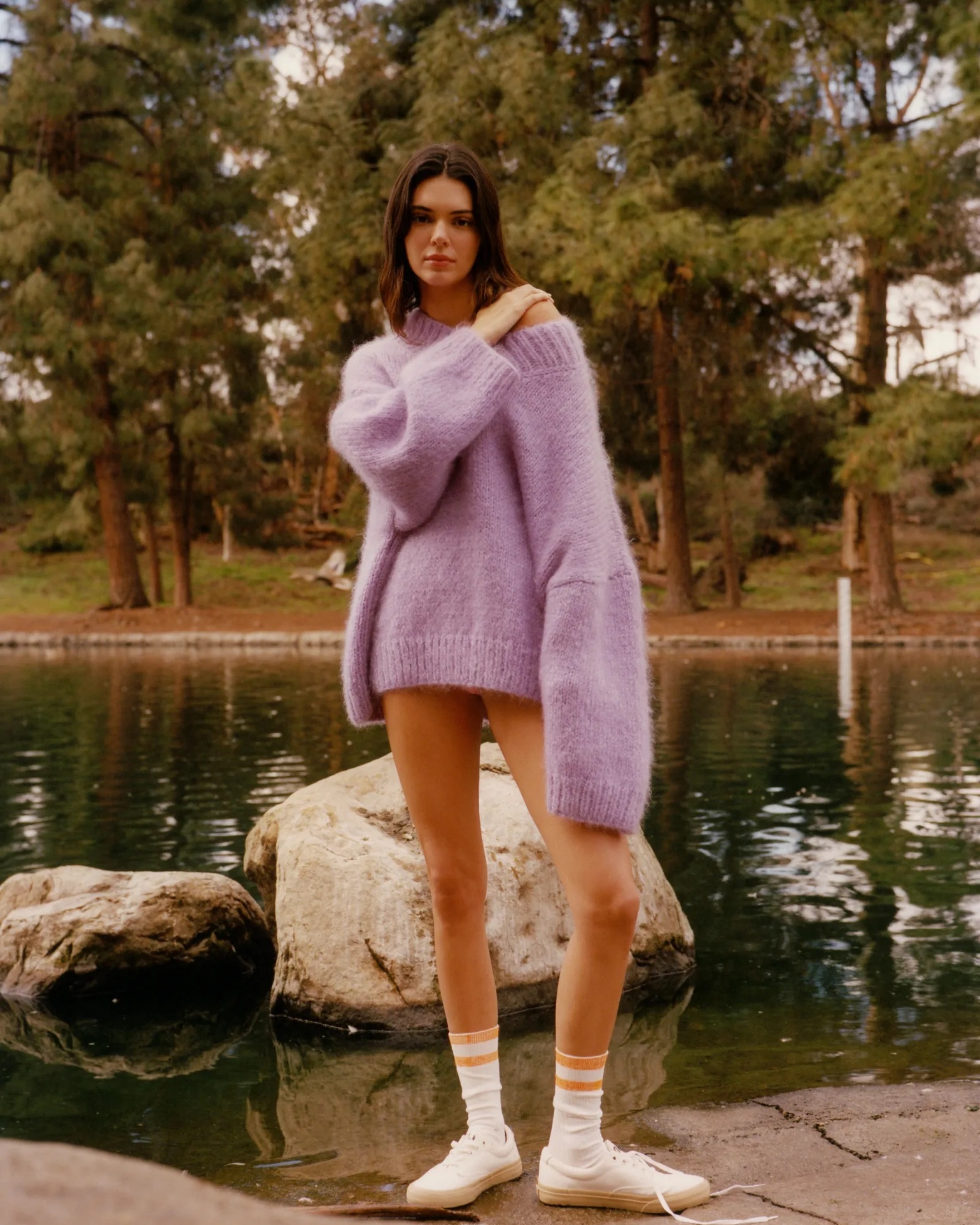Summer is high season for standing out. As the days get longer and moods lift, audiences are more tuned in than turned off – in fact, nearly half of consumers say they interact more with brands on social media during summer than they did six months earlier. Sun’s out, mood’s up, and scroll time spikes, creating a prime opportunity to push your visual identity beyond the beige.
Brands that win in summer are the ones who show up differently: with brighter palettes, bolder layouts, and more confident storytelling. The data backs this up – longer daylight and a collective craving for fun lead to greater openness to brand messaging and exploring new products. If there was ever a moment to experiment with your art direction, it’s now.
Let’s break down why summer is the moment to experiment—and how to do it well, with hot tones, motion graphics, and scroll-stopping imagery.
1. Color Hits Harder When the Sun’s Out
Summer actually changes how we perceive and respond to colour—that’s a fact of psychology. Warm, vibrant hues feel more vivid, wearable, and aspirational under bright sunshine. Rich oranges, bold fuchsias, turquoise blues: these intense shades convey the optimism and energy of summer, and they create what stylists call a “dopamine dressing” effect – wearing bright colours can literally boost your mood. It’s no coincidence that fashion brands lean into saturated tones and tropical contrasts this time of year. For example, Zara’s Summer collections often feature vibrant limes, magentas, and citrusy palettes, delivering a jolt of joy to shoppers. Luxury design house Pucci is famed for swirling neon prints, and Brazilian label Farm Rio fills its summer lines with tropical brights and bold patterns. These brands know that hotter palettes resonate when the weather is hot. Research in colour psychology shows yellows and oranges evoke warmth and optimism – key traits of the summer spirit. Even a pop of aqua or coral can tap into our vacation mindset, reminding us of oceans and sunsets.
The takeaway: If your brand normally lives in safe neutrals, now’s the time to test some contrast. You don’t need a full rebrand, just a seasonal shift. Try pairing pastels with hot pink, or clean white with an acid green accent. Overlay some elegant serif text on a sun-faded, beachy background for a fresh look. Your identity stays intact – but suddenly it feels summer-approved.
- Try this: Build a limited summer color palette for seasonal content. For example, choose 3–4 “vacation hues” (e.g. coral, turquoise, lemon yellow) to use in your summer ads, social posts, or packaging. This adds freshness and excitement without diluting your core brand identity.
2. Sunlight Loves a Shimmer
Colour isn’t the only thing that hits harder in summer—light itself becomes a design tool. When the sun’s high and bright, anything reflective or radiant catches the eye more intensely. That’s why summer is the perfect season for gloss, glow, and shimmer. Take Rhode’s latest Summer drop. It leans all the way into light-play: a glossy Peptide Lip Tint in Lemontini (a sheer, gold shimmer), a sun-soaked blush, and Glazing Mist for dewy skin—all tucked inside a translucent bubble bag. It’s not just a product line, it’s a summer moodboard. The warm, reflective textures mimic what we crave in hot months: hydration, warmth, and light-catching beauty. This is smart seasonal design. Just like fashion brands dial up bold colors for dopamine dressing, beauty brands use luminance to do the same. In summer, shimmer doesn’t read as “extra”—it reads as natural, aspirational, even necessary.
The takeaway: Summer isn’t about adding sparkle for sparkle’s sake—it’s about matching the visual language of the season. Gloss, glow, and gold feel elevated under sunlight in a way they just don’t in February.
- Try this: Think beyond color and build a texture palette for your summer branding. Consider how finishes like gloss, shine, dew, or translucency can replace flat matte graphics in your packaging, social content, or product styling. Use sunlight to your advantage—it’ll do half the storytelling for you.
3. People Want to Feel Something (Fast)
Summer energy is impulsive and tactile. We buy more, travel more, and click more in these months – but only if the visual experience stops us in our tracks. In the endless scroll, “scroll-stopping” content = high conversion. That means visuals need to immediately convey a feeling. Just look to Summer Friday's recent mood: A sun-drenched escape wrapped in soft textures and sensual rituals. Think blush-toned swimsuits, melting gelato, chilled glasses of rosé, and pink parasols fluttering in the breeze. It’s not just a beach day—it’s a slowed-down fantasy of warmth, glow, hydration, and feminine ease. Everything feels touchable. There’s shimmer on the skin, condensation on the glass, cream swirling into soft serve. The palette is light-drenched: pale pinks, golds, ripe berry reds, and sparkling sea blues.
It invites you to feel, not just see.
These type of campaigns don't just show what the product looks like – they tell you what it feels like to use it. This is where adding motion, texture, and movement to your content really matters. Animated typography, subtle grain or film filters, dynamic shadows and light flares, layered noise or sparkles – these little touches make digital content feel more tactile and real, helping it break through audience fatigue.
Studies back this up: including rich media or motion in ads can dramatically boost engagement. In one analysis, Facebook ads with cinemagraph-style motion saw 85% higher engagement rates than still-image ads. Email campaigns with animated GIFs or videos have also shown higher click-through and transaction rates than static emails. In short, movement catches the eye and holds attention in ways a flat image can’t.
- Try this: Update your static creative with lightweight motion formats. You don’t need full-on videos or dancing TikToks; think cinemagraphs (mostly-still images with one moving element), short vertical looping clips, or stop-motion sequences. For example, instead of a static product photo, create a 3-second loop where a model’s dress ripples in the breeze or a smoothie’s condensation drips slowly – something subtle but mesmerizing. These touches of motion give your content a tactile quality, helping people almost feel the summer vibes through their screens.
4. Campaigns Can Be Looser (On Purpose)
Summer gives you permission to relax your aesthetic a bit. After seasons of perfectly polished branding, audiences find it refreshing to see content that’s a little more playful or imperfect. In marketing circles, this is the rise of lo-fi content – intentionally under-produced visuals that come off as more authentic and fun. Think: behind-the-scenes snaps, film-style photo edits with light leaks, collage or scrapbooking vibes, casual voice-note audio overlays, or Instagram carousel posts that look like a moodboard from someone’s summer road trip. This “designed imperfection” feels both fresh and effortless, especially to younger viewers. In fact, it resonates so well with audiences that lo-fi brand posts now average 40% more views than high-polish ads. Consumers (especially Gen Z) are tired of overly glossy perfection – they crave content that feels real and in-the-moment, as if a friend could have made it.
Some of today’s trendiest brands have been leaning into this ethos. Glossier, for example, often shares candid BTS (behind the scenes) shots and off-the-cuff videos that make their marketing feel like a personal FaceTime rather than an ad. Cult fashion labels like Réalisation Par and Marc Jacobs’ Heaven line embrace DIY aesthetics – the Heaven Spring/Summer campaign was famously shot in a raw, 90s lo-fi style by photographer Harley Weir, complete with grainy images and deliberately quirky compositions. The result? It struck a chord with a youth audience that values nostalgia and authenticity. When your brand shows it can “let its hair down” for summer, consumers respond because it makes you more relatable.
- Try this: Treat your summer campaign like a creative playground. Ask yourself: what would our art direction look like if we weren’t trying to be perfect? Then experiment with that. Maybe it’s a series of spontaneous-looking Instagram Stories filmed on an iPhone, or a TikTok montage of your team packing orders set to a trending summer song. You could post a photo dump of summer inspirations that influenced your collection, or design a few social posts that mimic a scrapbook (Polaroid frames, doodles, mismatched fonts). Loosen the grid and have some fun – as long as it aligns with your brand voice, a touch of summer silliness can humanize your brand. Remember, done right, casual doesn’t mean careless: it means effortless. And the payoff can be real in engagement and ROI, with lo-fi content often earning higher shares and ROI than painstakingly scripted ads.
5. Your Audience Is in the Mood to Play
From music festivals to beach vacations to simply putting up an “out of office” email, summer is when people are actively seeking excitement and new experiences. Your audience’s mindset in summer is more exploratory and playful – and your brand should meet them there. Consumers have more leisure time and a mood uplift in summer, which leads to greater willingness to try new things. For example, 82% of consumers plan to travel in the summer of 2025, and many spend significantly on new outfits, gadgets, and gear before trips. That means they’re not only physically going places, but mentally they’re open to discovery and fun. This is a great time to launch limited-time collections or interactive campaigns that feel like mini experiences. The product might be the same, but the wrapping should feel special for summer.

Consider injecting a sense of play into various touchpoints of your brand. Maybe you drop a color-themed capsule collection (e.g. a popular sneaker in neon “summer edition” colors or a makeup line with tropical-inspired packaging). Or revamp your digital presence for the season: an animated, summer-themed landing page or homepage can surprise and delight visitors. Even a subtle touch like adding a sunshine animation or a festival-inspired Easter egg to your logo (just for summer content) signals that your brand is celebrating the season with your audience. The goal is to create an experience, not just a promotion. Summer shoppers respond to that – surveys show a spike in engagement for seasonal campaigns that emphasize experience and community.
- Try this: Launch a seasonal content extension that invites your audience to play along. A few low-lift, high-impact ideas: offer downloadable summer-themed phone wallpapers featuring your designs or slogans (so fans can carry a bit of your brand onto the beach). Create an AR filter or camera effect for Instagram/Snapchat that ties into your summer campaign (for instance, a filter that adds sunglasses and a cool drink in-hand, branded with your logo). If you’re in fashion or lifestyle, maybe publish a digital lookbook or style guide for festival season that customers can interact with. These extras don’t require huge budgets, but they make your audience feel like your brand is part of their summer experience. It’s about showing you’re in the spirit too – and that kind of timely excitement can build a deeper connection with consumers when they’re most receptive.
State of mind
Summer isn’t just another quarter on the calendar – it’s a whole different state of mind for your audience. They’re energised, curious, and primed for engaging with content that breaks the mold. By embracing brighter colors, adding movement and texture, loosening up your creative style, and delivering playful experiences, you tap directly into that summer state of mind. The evidence is clear that these strategies pay off: audiences are more receptive and responsive in summer, and brands that take smart creative risks see higher engagement (whether it’s an 85% jump in video ad interactions or 40% more views on authentic lo-fi posts).
In short, summer is the moment to innovate with your visual identity and content. Push beyond your comfort zone – even if just for the season – and you can capture attention while everyone else rests on the usual tropes. The brands that win in summer are those willing to show a different side of themselves, one that matches the vibrancy and spontaneity of the season. So swap the beige for some bold, trade the safe for the surprising, and join your audience in the summer spirit. You might just find that a few seasonal experiments lead to insights and brand boosts that last far beyond Labor Day. Now go forth and make this summer your brightest, most creative yet!


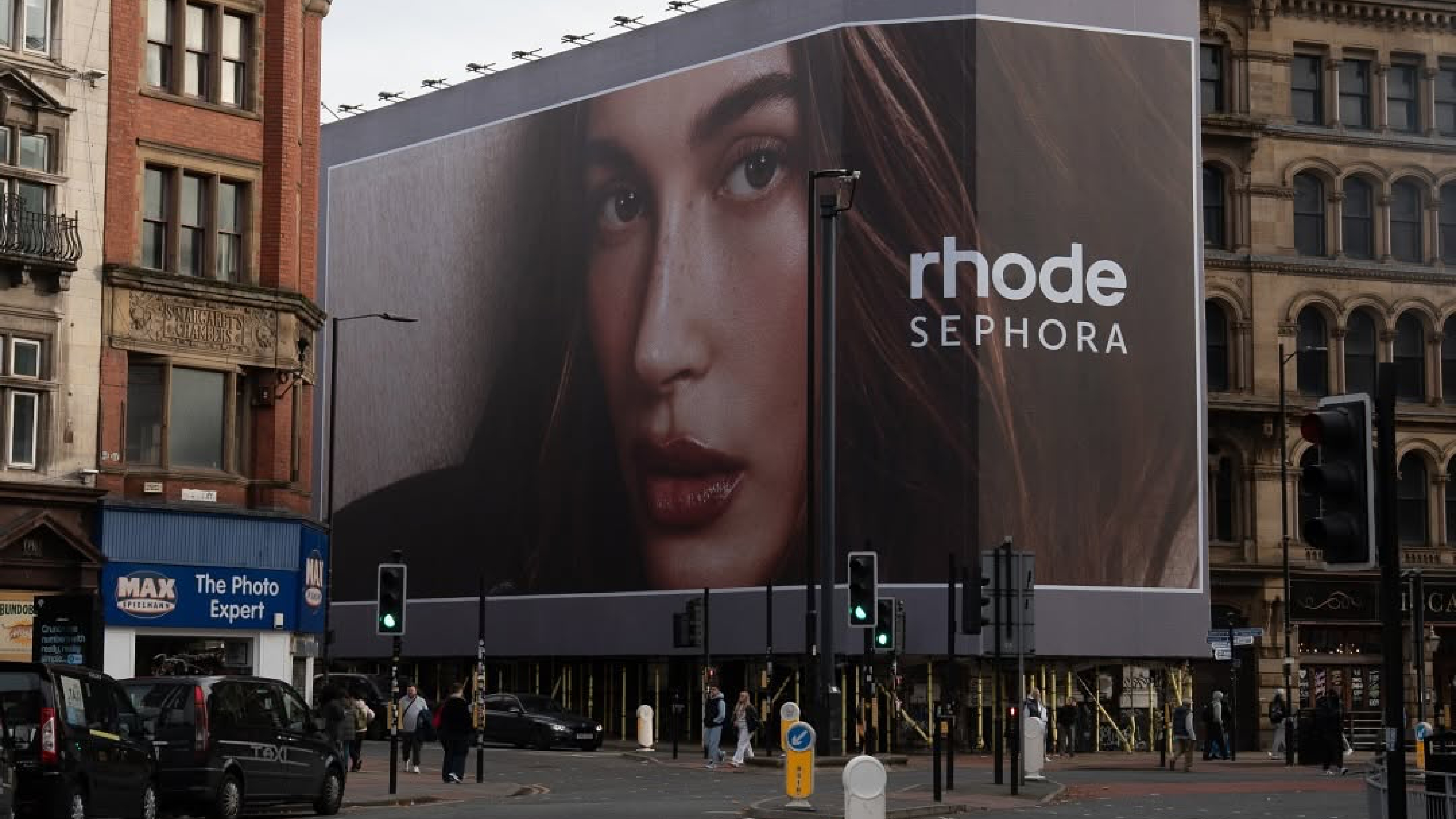
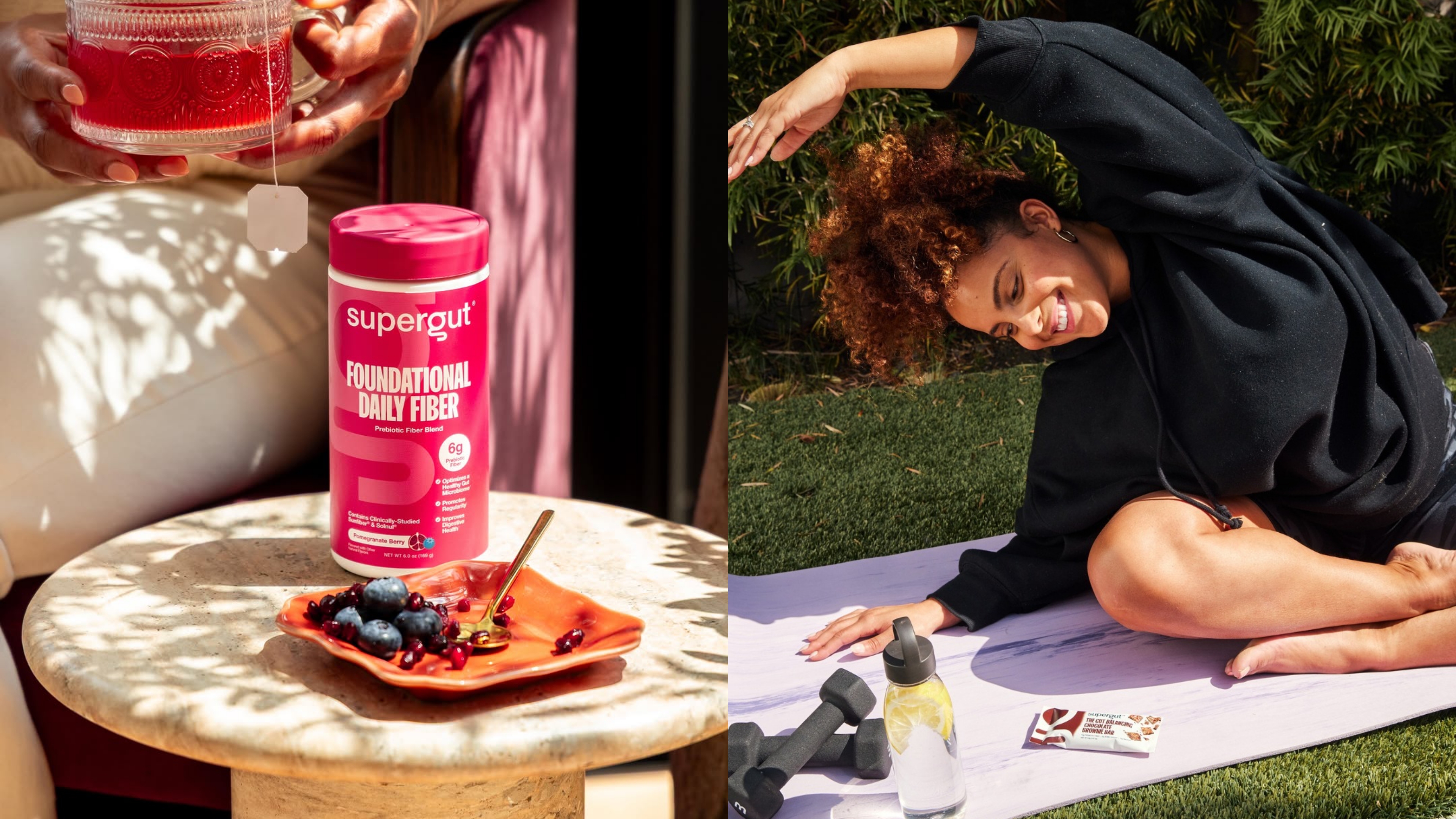


.svg)


.svg)
.svg)
